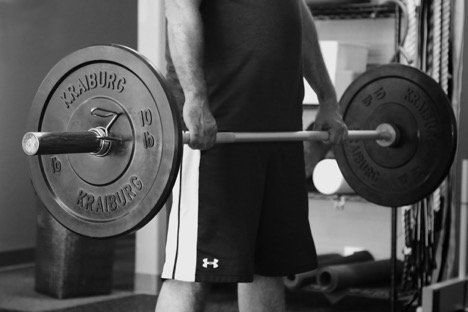Weight Loss and Strength Gains: You Can Do Both
When starting a new fitness program, it’s important to identify what your goals are. Do you want to lose weight or get stronger? Do you want your fitness to manifest by how fast you can run or by how much weight you can lift? Do you want to participate in a triathlon or in a weight-lifting competition? Or do you just want to move exceptionally well, look and feel good in your clothes, have tremendous energy, and feel full of life?
Knowing your goals and assessing your current health and fitness status will help you determine what you should focus on first and how to prioritize each of these fundamental wellness assets: nutrition, mindset, movement quality, strength, power, endurance, and athleticism. Vitruvian Fitness’ team of expert trainers will help you create your plan, reach your benchmarks and outperform your expectations.
Weight Loss
When we discuss weight loss, we’re really referring to fat loss. Getting your body fat percentage to within a healthy range should be a high priority. This is going to be an endeavor that is close to equal parts nutrition and exercise. While working on this phase, maintaining your current levels of lean body mass is important and making sure your nutrition is well balanced is the key.
As you make progress in the kitchen, match those efforts by increasing the frequency, quality, and intensity of your exercise. Over time, you’ll lose fat and you’ll move and feel better. Every 4-8 weeks, re-evaluate your program and adjust according to the goals you set out to achieve from the onset.
Strength Gains Are Not the Same as Building Muscle
Getting stronger is multi-factorial. It’s a combination of using the muscles you’ve already got, coordinating their use, becoming efficient with them, and then making them stronger by adding more to them. “Adding more to them” has multiple meanings. Keep reading! Let me give you an example.
You have a box that’s slightly larger than you can get your arms around and even if you could, it’s just a little too heavy to lift on your own. You have 3 friends standing right there but none of them are willing to volunteer to help and two of them don’t speak English (or whatever your native language is). If all 4 of you would work together, it would be easy work.
So, you get the English-speaking friend to take the other side of the box. You manage the weight of it OK but you need to take lots of breaks and you look like a pair of drunken sailors as you stagger across the room.
While you do this, one of your other friends starts to learn English. Eventually, she helps by grabbing a corner. The box feels lighter now and you move a little more sure-footed. And finally, the last friend begins to understand your cries for help and takes the last corner. Now the box feels super-light and all 4 of you move with grace and ease.
That’s what getting stronger is all about. You’ve got all the muscles – until you train them, they just don’t all work and not very efficiently.
In more scientific terms (but too scientific), you’re recruiting more of your existing muscle fibers, coordinating complementary muscle groups, improving movement patterns, and enhancing your stability and base of support. While you’re doing this, it’s the perfect symphony of body systems that includes (but is not limited to) the muscular, circulatory, nervous, and endocrine systems.
And in this initial phase of your exercise program, you might not have increased your lean body mass at all. But you certainly got stronger.
To lose body fat, you need to get your nutrition in check. To build muscle, your nutrition also needs to be in check. You’ll have to eat more to build more muscle, so it’s important to track what you’re eating to ensure you get the best results. The discipline required in order to build muscle means you should already have a foundation of healthy eating and exercising before you begin any muscle-building program.
But what does building muscle mean? Above, we mentioned “adding more.” Some people want the strength, power, and speed without the size. For this group, we’re getting toned or adding density. Other people need or want extra size and the strength, power, and speed. This is known as hypertrophy, or bulking up. Once you decide which version you want, the difference is in the exercise programming and the food you eat.
Believe it or not, to get toned and strong, lift really heavy weights for a low to moderate number of reps 2-3 times per week. And eat normally. To get huge, lift medium weights for an enormous number of reps 4-6 times per week. Eat whole cows twice per week.
Then depending on your other performance objectives, you’ll change up the speed, intensity, types of weights you’re moving, frequency, and fun factors. Don’t forget about the fun and don’t forget about the active recovery days.
Vitruvian Fitness is the right team to shepherd you on your fitness journey. Before we take a single step or lift a single weight, our team will perform a Functional Movement Screen™ to determine the best path forward for you. To get yourself into gear, contact us now.
You might also enjoy these posts . . .








